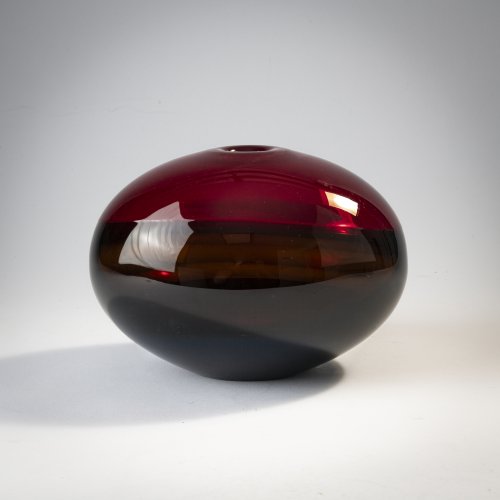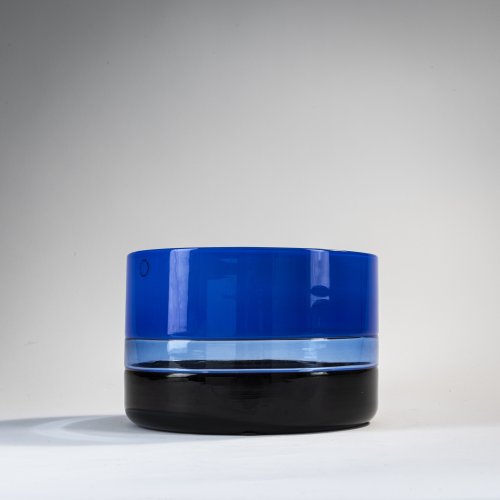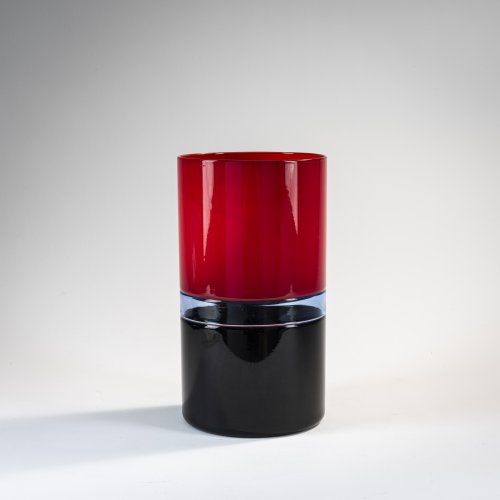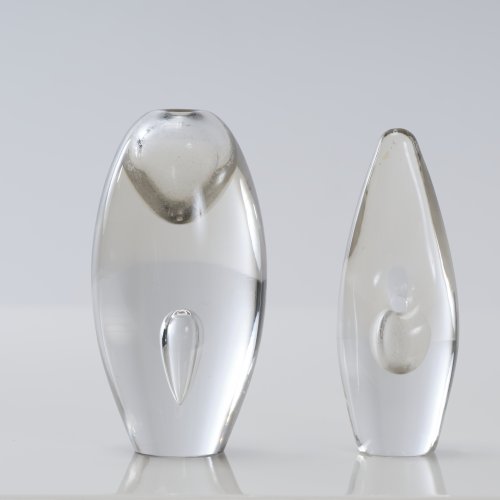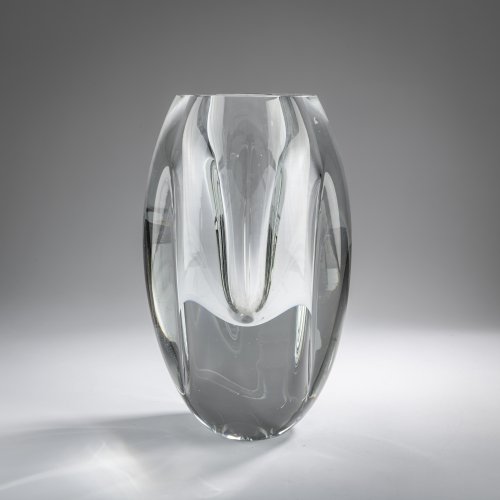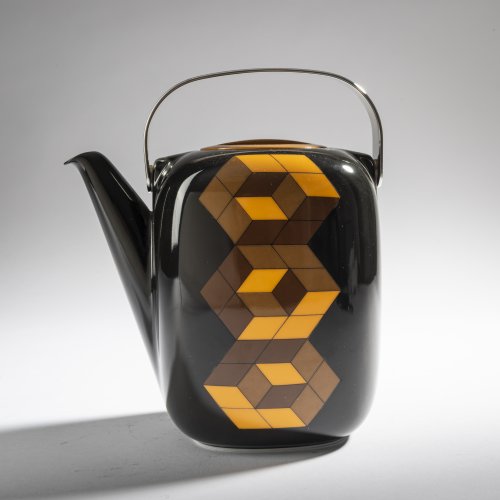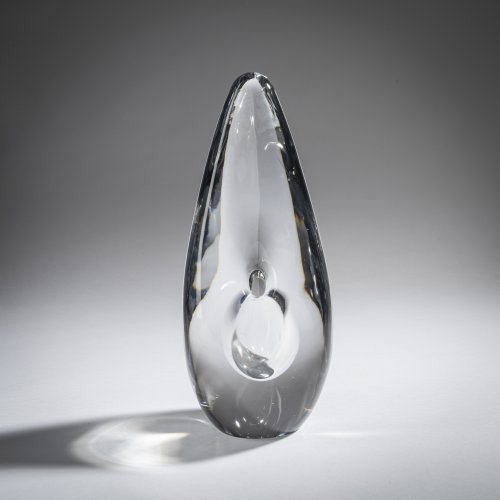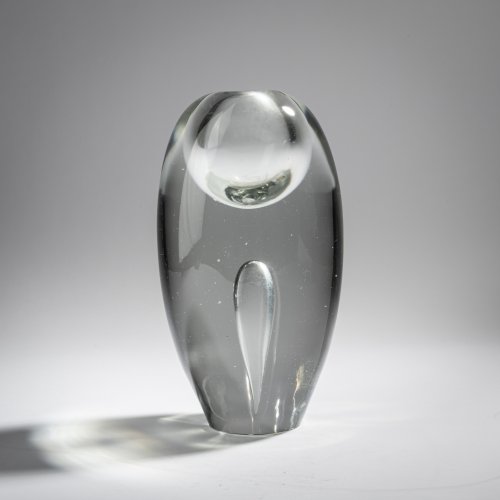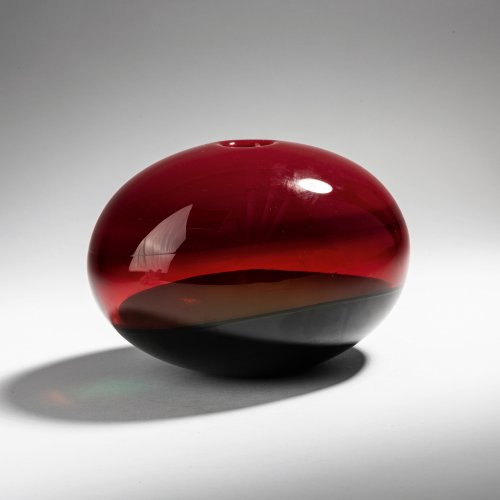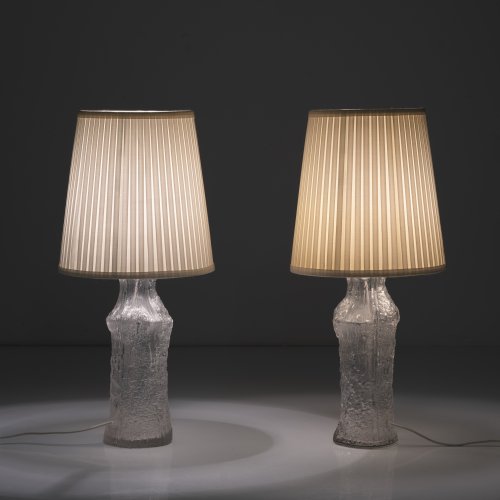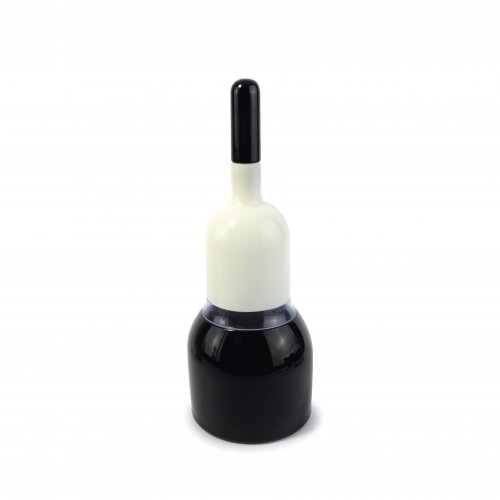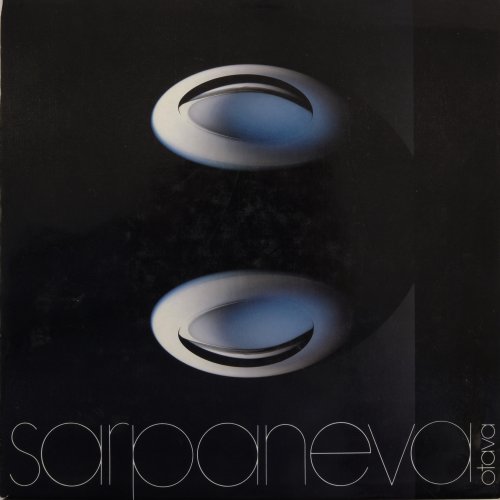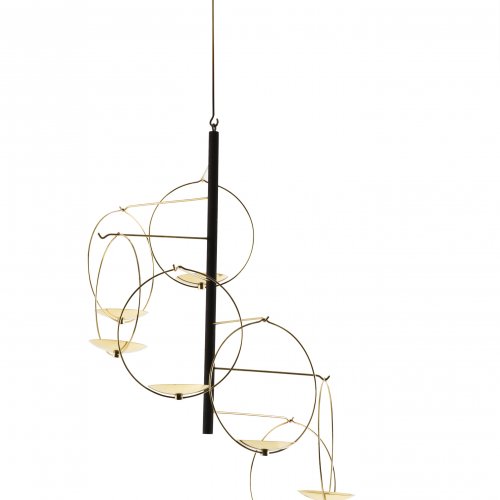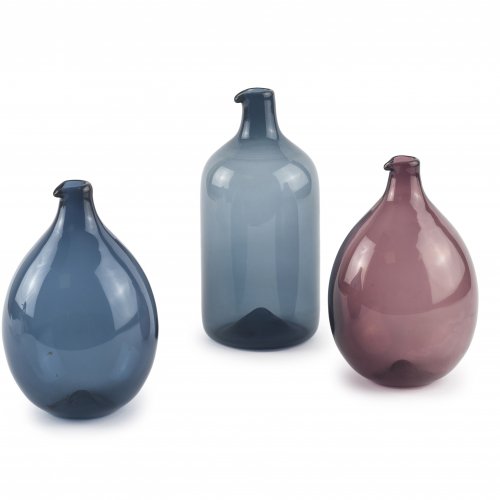Biography
Born in Helsinki in 1926, Timo Sarpaneva shaped the face of Finnish design for over fifty years. His most famous designs include a cast iron pot with a removable wooden handle, lighting designs and tableware for the German porcelain manufacturer Rosenthal, colorful striped textiles as well as numerous vases, plates, bowls, sets of drinking glasses and sculptures made of glass, which were shown at exhibitions around the globe. Designing glass was Timo Sarpaneva's greatest wish after graduating from the School of Applied Arts in Helsinki. In 1949, he won a silver medal in a competition organized by the Riihimäki glass company and was invited for an interview. But as a young academy graduate, he was not going to be paid for his designs, so Sarpaneva declined and initially worked as a freelance artist and graphic designer instead. He finally got a second chance as a glass designer with Karhula-Iittala, which belonged to the financially strong Ahlström empire, for whom Sarpaneva already worked as a graphic designer. His first major series, the i-line, won an award in Milan in 1957. For plates and hand-blown glasses, Timo Sarpaneva had developed a new color palette with watercolor tones such as violet, light blue, grey and grey-green, which was enthusiastically received by the Finnish clientele. The logo of the line, a red dot with a small white i in the middle, has been adopted by Iittala for all its products to this day.
Sarpaneva's career is closely linked to the history of Iittala. In the 1950s, the management allowed great artistic freedom due to a prospering economy and demand, as illustrated by the vases 'Lansetti‘ and 'Orkidea' and decorative bowls such as 'Kajakki‘ from 1953. Sarpaneva had developed a special technique to fill the body of the thick-walled glasses with air bubbles. From the 1960s onwards, rationalzation measures were carried out at Iittala and machines were used to increase the production of mold-blown glasses, but this did not affect the creativity of the Finn who was keen to experiment. Saw tracks in the wooden molds used in the production process, which gave the glasses a rough surface or a crazing effect was one of Timo Sarpaneva's groundbreaking ideas. The result was the ’Finlandia' series, which also conquered the international market. At the same time, Sarpaneva founded his own office and thus expanded the portfolio of his clients. From the end of the eighties, he worked for Venini and dealt intensively with the company's designs in order to arrive at his own creations. In 1990, Sarpaneva designed ’Kukinto', a new interpretation of the ’Fazzoletto’ vase, synonymous with Murano glass. He also came to Murano, said Sarpaneva, "to work for Venini, but also to find a master who could realise his dream images".
